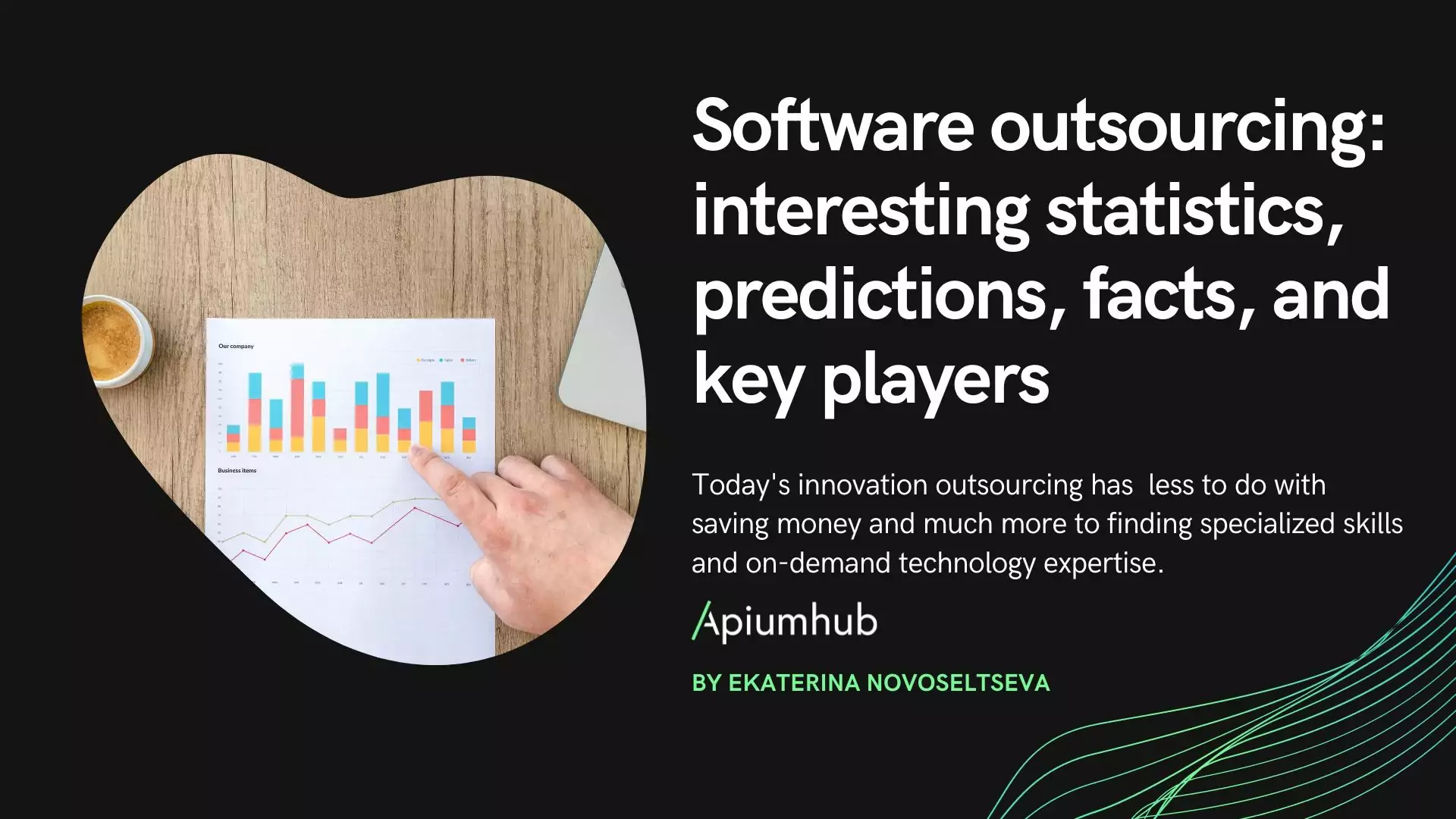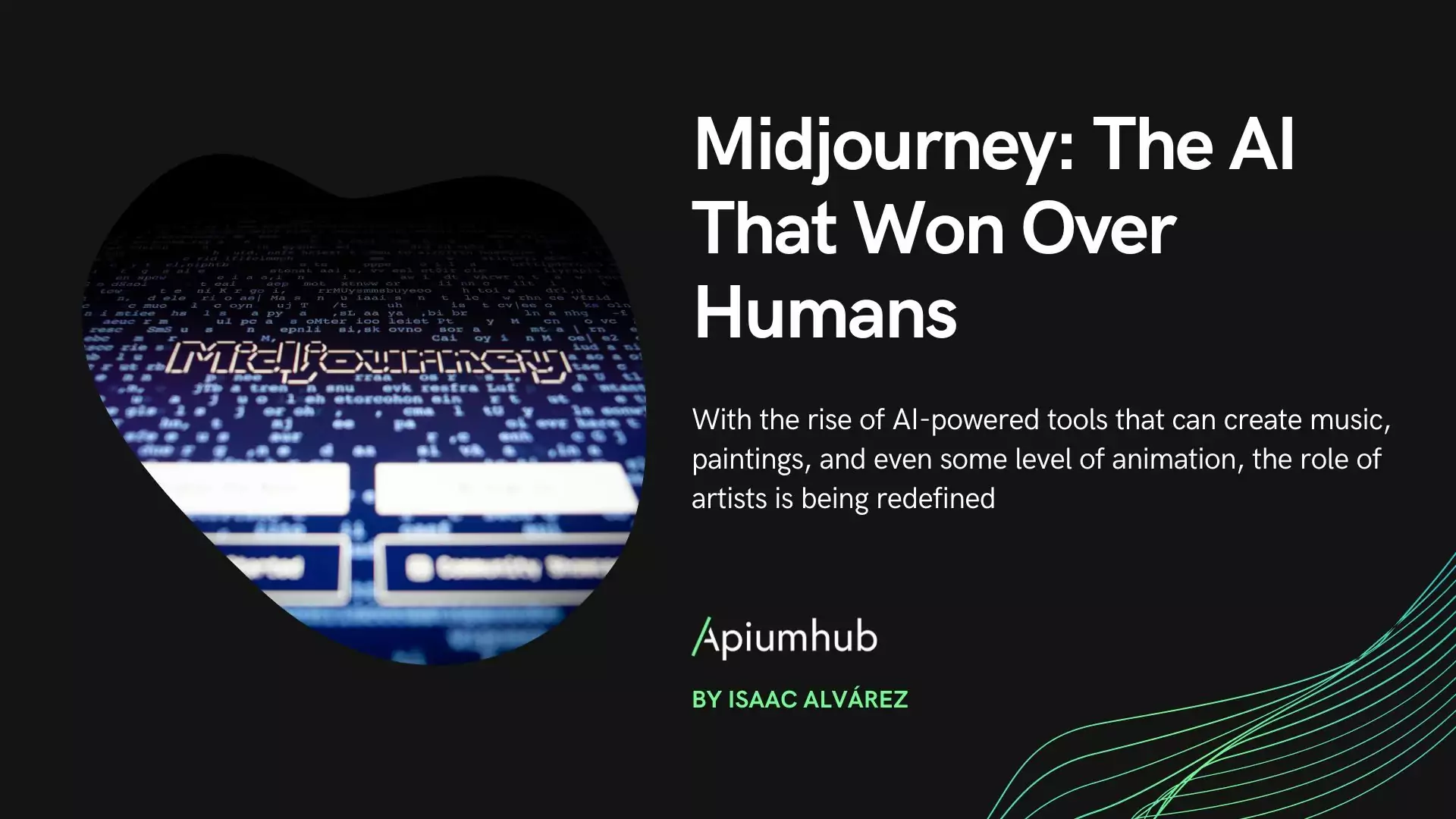Table of Contents
As a CMO of Apiumhub with a solid background in online world, I was invited as a Guest speaker to ESERP Business School to give a speech about digital luxury strategy.
In this article I want to share with you key guidelines, which would help you to increase your sales, customer satisfaction, brand value and have digital competitive advantage! Also, I will give you examples of successful implementation of each strategy, that I will mention.
Let’s start !
LUXURY BRANDS MUST INNOVATE OR DIE IN THE DIGITAL AGE
You may think, that’s extreme, but in reality it’s not! When people pay for the luxury products a fortune, they want to have unforgettable experience starting from searching for the product finishing after sales support and communication. That brand who innovates and offers to the customers something new and create a “wow” effect in every customer journey stop, will definitely stand out of the market.
We all see a growing power of the digital universe, now all luxury brands should work on their digital strategy. The “Right” digital luxury strategy differs for every brand according to its value proposition, but what’s clear is that it’s no longer just about a beautifully designed and user-friendly website or effective banner ads. The most successful luxury brands are those that build a compelling online presence, engage and influence consumers through targeted use of marketing software and focus on a carefully chosen set of digital-performance metrics.
After attending different fashion meetings, I highlighted the following:
DIGITAL FACTS
- 45 percent of luxury purchases are influenced by consumers’ digital experience: online research of a product, suggestions, vip invitations and use of technology, for example customers could personalize their bag with the help of an Ipad etc Luxury brands need to take care of each step their customers could make, taking into account what devices they use and how they do it. For example, while luxury shoppers are at work they rely mostly on desktop or laptop computers, but when they are eating or shopping, they’re more likely to use smartphones, especially to search for products and store locations.
- More than half of luxury shoppers’ searches are mobile
- One in five does some research on a mobile device before making a luxury purchase
- Apps convert at a rate of 3.7 times higher than mobile browsers and two times more than desktop in terms of adding to basket and buying
- Luxury brands with informative, easy-to- navigate responsive sites are more likely to drive store traffic
- Luxury consumers are interested only in apps that offer detailed, up-to-date information or useful services, an app that features an easy-to- browse product catalog or that delivers exclusive offers to loyal customers
- Consumers are willing to buy luxury products online, and at undiscounted prices
Digital is affecting entire value chain, from digital marketing to enhanced in-store experience, from multi-channel CRM to product co-creation. It is still in a very early stage across most functions and now it’s the best the best time to capitalize on that. Digital communication can create many opportunities, access to big data can provide powerful new insights to marketing and category management, for example, improving pricing, promotion and assortment to drive revenues and earnings.
The rise of digital marketing is changing the way luxury brands engage with customers, and traditional companies must embrace what is now possible in today’s connected and mobile world or be left behind. “The luxury industry is at a turning point,” said Chris Moody, creative director at brand consultant Wolff Olins, speaking at a seminar hosted by the Guardian and held in association with Harrods Media.
According to The Guardian what is important about digital media is that it generates data, making it possible to analyze data, that was previously wasn’t even reachable. Digital media is more measurable than any other form of media we do. It is not just about huge reach numbers, it is about creating engagement, understanding customers’ journey and then delivering relevant content along the way.
Here, I want to start with an example and of course example should be a company with the best digital strategy nowadays – it’s Burberry! All Burberry’s digital campaigns, right from the Art of Trench microsite, which turns the streets of the world to runways by allowing users to submit their pictures in their favorite Burberry trench coats, to enabling the heights of personalization with Burberry Bespoke, they integrate the essence of the brand with the ease of technology. The main website itself is well laid out, is highly interactive and easy to navigate. An additional section to check out is ‘Burberry Acoustic’ which features fairly undiscovered musical talent from across UK. Where does the brand figure in there? The well directed and highly stylised videos feature the artists wearing the latest Burberry collections. So the idea is not only to go digital with your core product, but you could be creative and do something together with your strategic collaborator.
In luxury brand management, most industry players have realized that experiences are essential. Luxury brands are an entirely different proposition and require a very specific approach to brand management and marketing. Luxury brands can communicate their exclusivity in many different creative ways by using technology, driving not only purchases but a deep emotional connection that can last a lifetime.
KEY THINGS LUXURY BRANDS NEED TO FOCUS ON IN ODER TO DESIGN AND MARKET A TRUE ONLINE LUXURY EXPERIENCE
1. First of all, start with an essential one! Build a website or a mobile app that combines style, user experience, and functionality. Generally speaking, luxury brand websites are very stylish, but perform poorly when it comes to user experience, functionality and creativity. Users don’t want to have an app, which is exactly the same as a web, they want to have something new, more features, more value, more engagement!
I found on epicbrandz a good example – Bentley, it has an outstanding web page, where website coaxes viewers take virtual trips across the globe right from the gorgeous castles of Spain to the spellbinding sand dunes of Oman, experiencing the beauty of the places as you go along. At the end of the journey, you’re given three options- finding the route on google maps, sharing the experience with your friends or downloading the route as a PDF. Bentley went even beyond just having a cool website with their products, they offer something else, that make their customers say “ love it”.
Another example is Tiffany & Co – by capturing the power of user generated content. “What makes love true” is a mobile app that builds a world of romance for the user- with Tiffany right at the centre of it. Right from romantic movies and music, inspirations for weddings and beautifully captured photographs- it has it all. Another interesting app is the “Engagement ring finder” which allows users to browse through the entire range of Tiffany rings, share images with their friends and even schedule an appointment for purchase.
Also, check the user-friendly MessyWeekend website, simple but at the same time visual, intuitive and eye-catching presentation of the products.
2. Create a sense of exclusivity online. Exclusivity is fundamental to luxury brand marketing as it maintains consumer desire through scarcity and rarity. If anyone could walk into Louis Vuitton and buy a handbag, Louis Vuitton would lose their appeal to those who wish to have something that others can’t get access to. or luxury brands, the Internet does not represent wider distribution of actual products. It’s a wider distribution of the content that evokes the desire to buy luxury products. Exclusivity can be created online through exclusive offers and invitations for the mobile app holders etc
3. Involve your online customers in a ritual. A true luxury brand can’t stop their offering at the product, they must go beyond that to offer unique services or rituals. Make customers be part of the design process, allow them to customize their product. Loewe brand does it really good. If a woman pays 15 000 euros for the bag that’s obvious that she doesn’t want to meet another woman with exactly the same bag. So what solution Loewe has found: clients could completely customize their Loewe bags with the help of their Ipad app, changing the material, colour, they could write their name etc
4. Create aspirational content to educate customers! Sometimes people don’t buy your product just because of the lack of information. For example, I know a lot of people, who don’t buy luxury cloths because they just don’t know how to combine it with accessories and buy it to wear just several times it’s expensive, they think that the way they buy it, this will be the only way they can wear it. But if you develop a section on your mobile app suggesting what accessories you could wear with the cloths, let’s take an example of a simple white dress, woman could become inspired and see how many possibilities they have with this dress, it can be for work, for a date, casual etc it’s just a matter of combination and because now we are very busy and not all of us have creative skills, we need to help our clients to see what they need to buy to look cool and what they can do with the same cloths to look different every time.
Good example is DKNY, their app gives fashion advice to affluent customers, it provides styling suggestions of DKNY Cozy garments “for the modern woman on the go”, along with step-by-step instructional videos. Last week I read on poqcommerce that Donna Karan – the person behind the label has her own separate app where she shares inspiration and photos from Bali that stir jealousy among those of us sitting in an office. The designer describes the app as “the modern evolution of the time I spend with my customers in the dressing room”.
5. Supply content that appeals to people’s desire to display their status. One of the main reasons why people talk about things is to display the traits that they want others to see in them. Because one of the primary motivations for buying luxury goods is to display status, brands can take advantage of this by creating and publishing content that, when others share, will make them look stylish, smart, or cool to their friends.
6. Immerse customers in your brand ethos. For example, if you claim that you are brand is for crazy, creative people that see the world from different angle. Build a website, where everything would be upside- down.
7. Take the in-store experience online, and the online experience in-store In the near future, talking about online and offline will be like talking about the benefits of our left leg vs. our right leg. Both are integral to the other.
Now, let’s talk about Marketing P’s, I am sure you got used to traditionl 4 P’s, but in luxury thare are much more of them and they are different.
8 P’S IN DIGITAL LUXURY STRATEGY
1. PERFORMANCE
Apart from having a high quality product and a nice website, what is expected by consumers, brands need to deliver exceptional experience by innovating or using latest technology, making people love or admire the brand.
2. PEDIGREE
Advocate beliefs Be more than a logo – when consumers think of a true luxury brand, they’re likely to think of a whole set of visual icons Communicate legends to establish a myth. Myths should be conveyed indirectly and should be consistent in every point of delivery, including products, stores and marketing. Luxury brands often achieve this by inducing a degree of mystery or by making a connection with art to communicate myths in an elevated way. For example, chanel actively keeps the myths associated with its creator, Coco Chanel, alive and these myths feed the brand to this day and the “Inside Chanel” microsite showcases the history of the brand and its many iconic products. Tell the stories. Marketing starts by explaining why brand exists. The majority of brands still market their products by explaining what they do. Communicating the story behind your products, and explaining the values that define a luxury brand, is fundamental to effective luxury marketing. Excellent example is Apple : “Everything we do, we believe in challenging the status quo. We believe in thinking differently. The way we challenge the status quo is by making our products beautifully designed, simple to use and user friendly. We just happen to make great computers.” Tiffany! I think every girl in the world dreams about “her tiffany love story”. Their offline and online presence is all about love stories. Emotional factor plays a huge role here!
3. PAUCITY
Many brands try to maintain the perception that the goods are scarce to maintain this luxury status. Tactical-driven paucity is more promotional in nature such as special limited edition only for the mobile app users to generate artificial demand and promote their new app.
4. PERSONA
The persona of a luxury brand is its distinctive projection plus coherence of its applications across consumer touch points brand colors, other design elements such as icons, uniquely identifiable design, branded environment, music and even the tone of voice. The visual brand identity captures the brand’s personality, mystique and emotional values in a nutshell.
Digital luxury strategies can be observed as: • More emotional and sensual to distance it from mass-premium brands • Create a world and an aura that is truly exceptional to their brand signature • Generate major differentiation in its production and execution The objective is to generate a genuine affinity with the brand that transcends beyond the product to an extent where the consumers feel that they have found a soul mate.
5. PUBLIC FIGURES
Public figures or celebrities have traditionally been employed as one of the marketing mix in luxury branding and they still continue to garner attention, credibility and impact. Less in-your-face advertising tools can be very helpful if they are done smartly! Accessorizing or dressing celebrities for their walk down the red carpet, product placements within movies and television programs and invites to special events – this is offline channels and as for the online as everything is interconnected, put on your website or mobile app a section of inspiration, where customers can see these celebrities from these events and get inspired of their look. This strategy attempts to remove the appearance of “selling” while still promoting the product by making it seem as a part of the celebrity’s lives, thereby positively affecting the consumer’s attitudes, brand value and purchase intention.
To give you an example, I read on the futureofluxury that Net-a-porter created the Netbook iPad and iPhone app, which adds a social layer to the usual e-commerce experience, users are invited to create a Netbook profile from which they can follow celebrities and like looks and products shown in the real-time. Sarah Watson, Net-A-Porter’s group mobile manager, revealed that the app was inspired by research that showed that customers like to be inspired by other people, especially by celebrities. Users can filter results in the Global Feed by choosing to view results only from those they’ve followed in order to check out what looks they’re loving in the “Admiring Feed”.
6. PUBLIC RELATIONS
Public relations in luxury branding plays an enormous role in image proliferation of the brand, thereby subtly influencing public opinion. PR is used to generate buzz and convey brand news, point of views of inspirers and influencers including celebrity talk or the designer speak and a crucial support for brand activation such as the fashion weeks, sport events and themed previews all of that should be available in companies web page and mobile app. I know that some brands post designer’s interview only on their online channels to drive traffic to their e-commerce websites.
7. PLACEMENT
Luxury branding is all about heightening the consumer’s brand experience and amplifying the brand aura. Companies should think about the chain of touch points that consumers interact with to create a unique indulging experience.
Luxury customers are busy people. They may travel often for business or pleasure, and they rely on their mobile devices to pass the time. To ensure that the movers and shakers buying their products can be tuned in with the brand wherever they are, Gucci created Gucci Style, a “shoppable magazine” that allows users to shop on the go.
Today’s evolving luxury consumers are increasingly looking beyond the typical sophisticated, over-the top, cosmetically elegant presentation or even the exclusive online invites, privileged previews etc, they are looking for an exceptional online experience and when they are in store to have at least Ipads with an app available. Now Push notifications and AR play a huge role in the luxury retail industry, people like to interact with the brand without any help of the sale person.
According to getelastic, L’Oreal Scan-to-Shop – a great example of merchandising beyond the storefront, L’Oreal’s mobile app includes scan-to-shop technology that allows fans to scan products in magazine ads or in-store to buy directly on mobile. Scan-to-shop is a bona fide trend, with the likes of Nordstrom, Victoria’s Secret and Net-a-Porter also using this technology. The potential to take advantage of showrooming behavior using scanning and image recognition technology is an opportunity brands and retailers shouldn’t pass up.
8. PRICING
Pricing plays a quite a big role in the way that consumers perceive luxury brands. Consciously or subconsciously, consumers tend to generate a mental luxury statue or image with the price range that the brand operates. Luxury brands must justify their price through the interplay of the P’s mentioned above, thereby keep up and maintain a higher perceived value. There are many ways to add more value to the purchase such as gift with purchase, gift certificates or rebates for the next purchase, multiple item discounts, online or email exclusives, more loyalty points and no shipping and handling charges by online retailers. Luxury brands also use as a channel luxury online shops, where people going there know that there they can find only luxury brands with high prices.
Brands that reach luxury shoppers with the right experiences and information at the right moment will win a larger share of growth and outperform competitors. Brands that don’t keep pace with their customers’ digital behavior and preferences will fall behind. And companies that provide frustrating or substandard online experiences may tarnish their brands and destroy value.
Digital is now the engine of the luxury shopping experience. In today’s world there are so many digital possibilities. It could be a microsite following a designer around the world for inspiration, or using virtual reality so the customer can see how magnificent they would look in an outfit, an app that the client can use in-store to get more information on the product, or even something as simple as equipping sales people with an ipad so they have tools to provide the very best customer service imaginable. The most successful luxury brands will be those that build a compelling online presence which goes together with offline strategy and brand’s essence.
Don’t forget to subscribe to our monthly newsletter to receive latest trends in the technology industry!
If you found this article interesting, you might like…
- Top business blogs to read
- Human-centered innovation
- Barcelona makes it to the top 5 of innovation hubs
- Top smart city projects to watch
- Blockchain technology: use cases, statistics, benefits, startups & events
- Barcelona; one of the best smart cities in Europe
- Disruptive innovation to track
- The era of unicorns
- Top 20 promising startups in Barcelona
- IOT projects that may change the world
Author
-
Ekaterina Novoseltseva is an experienced CMO and Board Director. Professor in prestigious Business Schools in Barcelona. Teaching about digital business design. Right now Ekaterina is a CMO at Apiumhub - software development hub based in Barcelona and organiser of Global Software Architecture Summit. Ekaterina is proud of having done software projects for companies like Tous, Inditex, Mango, Etnia, Adidas and many others. Ekaterina was taking active part in the Apiumhub office opening in Paseo de Gracia and in helping companies like Bitpanda open their tech hubs in Barcelona.
View all posts









